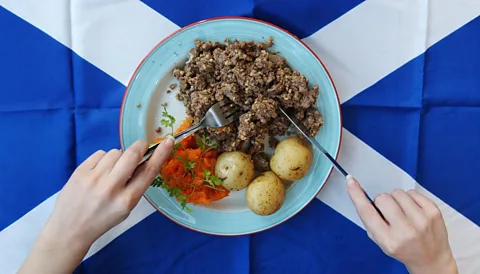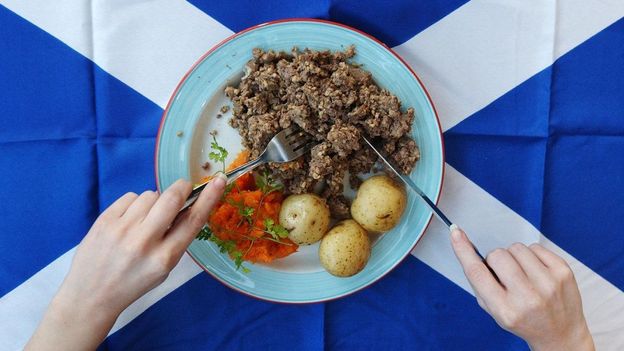
Every 25 January, dinners, dances, poetry recitals and a dram or two of Scotch whisky in honour of Scotland’s greatest poet.
On 25 January, virtually everyone who has a hint of Scottish ancestry (and a fair few who do not) don a kilt and brush up on the works of Scotland’s greatest poet to celebrate his birthday. The life of 18th-century wordsmith Robert “Rabbie” Burns is celebrated each year across the United Kingdom through traditional Burns Night dinners, dances, poetry recitals and more than a dram or two of the finest Scotch whisky.
Robert Burns was not a
poet shy of a challenge. Why waste your time writing verses about flowers or
young lovers when you could apply your lyrical talents to the joys of cooked
intestines? “Fair fa’ your honest, sonsie face, Great chieftain o’ the
pudding-race!” he wrote in an Address to a Haggis, the poem traditionally
recited as the famous offal-stuffed sheep’s stomach is carried onto the banquet
table at most Burns Night dinners, accompanied by the strains of bagpipes.
If nothing else, this
wholehearted artistic commitment to the sometimes odd, always proud heritage of
Scotland is alone worthy of celebration 253 years after Burns’ birth. But when the
night that bears your name has turned into one of the biggest annual parties of
the year, you really must be doing something right.
Burns was born in 1759
in Ayrshire, and after a lifetime of torrid love affairs and a prodigious
literary output, died in his adopted hometown of Dumfries, Scotland in 1796.
His poetry and songs continue to be a fierce source of pride for the Scottish
diaspora, with his New Years anthem Auld Lang Syne being sung by millions at
the start of each 1 January.
A couple of years ago,
it was reported that there are now
more Burns Nights held in England each 25 January than in Scotland. And the
festivities have indeed become incorporated in the general British identity
(although it is probably not the best idea to start claiming that in the wee
hours inside a Glasgow pub!). There are
hundreds of Burns Night events all over the country, with most local pubs having
some Burns-related fun planned, but some events are bigger than others.
Òran Mór, Glasgow
You will not find a
grander setting for a Burns
Night supper than the auditorium at Òran Mór, a huge cultural centre in
Glasgow’s west end. Under a domed ceiling painted by legendary Glaswegian
artist and author Alasdair Gray, surrounded by original pagan-style stained
glass windows, a three course menu is served with whisky. Even better, the
Sirens of Titan choir will perform Burns’ classic cantata The Jolly Beggars (or
Love and Liberty), accompanied by a pianist and string quartet.
The Ceilidh Club, London
The best, guilt-free
way to get stuck into all that haggis and shortbread is to know that you will
be dancing it all off afterward. London’s Ceilidh Club hosts Celtic country
dance sessions most weeks throughout the year, but really pulls out the stops
for Rabbie. The club will be hosting not one, but five Burns-themed ceilidhs
throughout January and February – three hours of energetic dance floor action
will be interspersed with the traditional Burns menu, as well poetry recitals
and bagpipes.
Burns Howff Club, Dumfries
The Burns Howff Club
was formed in 1889 and meets a few times a year in the poet’s favourite
drinking den (or “howff), the Globe Hotel, in his hometown of Dumfries. There
could be no better introduction to the world of Rabbie than a visit to the Howff Club’s Burns Night event, where
some of Scotland’s most dedicated Burns enthusiasts lead the toasts and
singing. Since these celebrations are not open to the general public, you must get
in touch in advance and arrange a tour, possibly stopping by a few more of
Burns’ haunts and the statue of his great love, Jean Armour.



